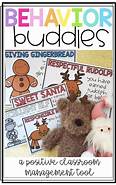How to Ground Your Pets: An Effective Approach for Positive Behavior
Pets are beloved members of many families, but sometimes they may engage in behaviors that challenge the harmony of the household. Grounding your pet can be an effective way to discourage undesirable behaviors and promote positive ones. Here's a step-by-step guide on how to ground your pet:

1. Identify the Undesirable Behavior
The first step is to pinpoint the specific behavior you want to correct. Is it barking excessively, jumping on furniture, chewing on objects, or something else? Once you know what behavior you're addressing, you can start implementing the grounding process.
2. Create a Designated Time-Out Area
Choose a safe and quiet area in your home where your pet can be grounded. This could be a crate, a pet bed, or a gated area in a corner of a room. The area should be free of potential hazards and distractions.
3. Ground Your Pet Calmly and Consistently
When your pet exhibits the undesirable behavior, firmly but calmly take them to the designated time-out area. Place them inside the area and close the door or gate. The duration of the time-out should be short, usually around 5-10 minutes. It's essential to be consistent with the grounding process. Every time your pet engages in the undesirable behavior, they should be grounded immediately. This will help them understand that the behavior is unacceptable.
4. Release Your Pet from Time-Out Graciously
Once the time-out period is over, release your pet from the designated area. Do not give them any attention or treats right away. This will prevent them from associating the time-out with positive rewards. Instead, wait a few minutes before interacting with them again.
5. Provide Positive Reinforcement for Good Behavior
When your pet behaves well, shower them with praise, treats, or other positive reinforcement. This will help them understand what behaviors are desirable and encourage them to continue those behaviors.
6. Be Patient and Persistent
Grounding your pet may not yield immediate results. It takes time and consistency for them to learn and change their behavior. Be patient and persistent with the grounding process, and eventually, you'll see positive changes in your pet's behavior.
Additional Tips:
1. Always use positive reinforcement along with grounding for best results.
2. Avoid using physical punishment or harsh words when grounding your pet.
3. If your pet's undesirable behavior is causing significant problems, consult with a professional animal behaviorist for personalized guidance.
Declaration: All article resources on this website, unless otherwise specified or labeled, are collected from online resources. If the content on this website infringes on the legitimate rights and interests of the original author, you can contact this website to delete it.




